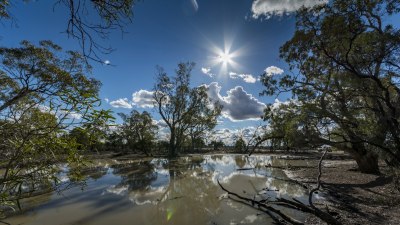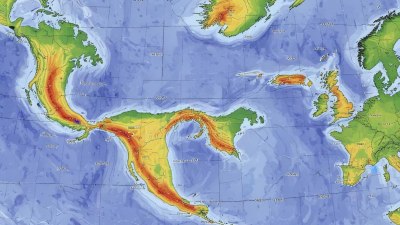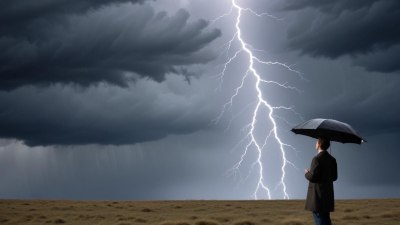Why the Amazon River Creates More Rain Than the Weather Channel Can Predict
Explore how the Amazon River influences rainfall patterns beyond weather predictions with unique ecological factors.

The Amazon River, one of the most remarkable waterways in the world, is not only known for its length and biodiversity but also for its significant influence on weather patterns, particularly rainfall. Understanding how and why the Amazon River creates more precipitation than some weather prediction models can account for is crucial for grasping the intricacies of the Amazon's ecosystem, climate impact, and the broader implications for global weather systems. In this article, we explore the myriad ways in which the Amazon River contributes to increased rainfall in the region, including the mechanisms of evaporation, transpiration, and the interaction between the river’s ecosystem and atmospheric conditions.
The Role of Evaporation
One of the primary reasons the Amazon River and its surrounding rainforest generate substantial rainfall is through evaporation. The vast surface area of the river promotes high rates of evaporation, especially under the warm and humid conditions typical of the tropics. This process releases immense amounts of water vapor into the atmosphere, which can affect local and regional weather patterns.
When the intense sunlight warms the surface of the Amazon River, water molecules gain energy and rise into the atmosphere as vapor. This transition from liquid to gas is a critical part of the hydrological cycle. The river, stretching over 4,000 miles and feeding into the Atlantic Ocean, acts as a conductor of moisture. It contributes about 20% of the freshwater flowing into the oceans globally, highlighting its significant role in the water cycle.
Transpiration and Its Effects
Alongside evaporation from the river, transpiration plays a vital role in influencing rainfall patterns in the Amazon region. Transpiration is the process by which plants release water vapor into the atmosphere through small openings in their leaves called stomata. The Amazon rainforest, composed of diverse vegetation, is one of the most significant contributors to transpiration globally.
As trees and plants absorb water from the soil, they eventually release a portion of that water back into the atmosphere. This transpired water contributes to a moist and stable atmosphere, which is essential for cloud formation and precipitation. It’s estimated that the trees in the Amazon rainforest release considerable quantities of water vapor—around 30-50% of total rainfall in some areas stems from this process alone.
The Clouds and Rain Generation
As water vapor accumulates in the atmosphere, it cools and condenses to form clouds. In the Amazon basin, this phenomenon is enhanced by the combination of immense humidity and convection currents created by the heat from the sun warming the forest and river. The warm air rises, cools, and leads to cloud formation that often results in heavy rainfall.
Furthermore, cloud formation in this area is often localized, meaning that rainfall can occur in one region while nearby areas remain dry. This phenomenon is known as convective precipitation, where localized heating leads to faster uplift of air, resulting in more intense rainfall. The slew of rainfall events significantly impacts not only the local flora and fauna but also contributes to the overall moisture recycling that occurs in the region.
The Feedback Loop of Moisture and Rainfall
The interactions between the Amazon River, evaporation, transpiration, and atmospheric dynamics create a feedback loop. More humid, warm air from evapotranspiration enhances cloud formation, leading to increased rainfall. This rainfall, in turn, replenishes the river and surrounding ecosystems, promoting further transpiration and evaporation.
This feedback loop makes predicting rainfall in the Amazon challenging for meteorologists and weather prediction models. Many models may not account for the intricate local interactions, resulting in forecasts that underestimate or misrepresent the potential for rainfall.
Local vs. Global Weather Systems
While local conditions driven by the Amazon’s ecosystem heavily influence rainfall, broader weather patterns also play a role in determining how much rain falls in the region. The phenomenon known as the El Niño-Southern Oscillation (ENSO) demonstrates how distant ocean-atmosphere interactions can affect rainfall in the Amazon basin.
During El Niño events, for example, the warming of ocean waters can lead to altered wind patterns that change precipitation patterns across South America, including the Amazon. These global phenomena can affect the river’s hydrology and, consequently, the level of rainfall, creating an added layer of complexity to weather predictions.
The Impact of Deforestation and Climate Change
Human activities, particularly deforestation for agricultural purposes, have started to alter the natural processes governing rainfall in the Amazon basin. The removal of trees reduces transpiration and, consequently, the humidity levels in the atmosphere, which can lead to decreased rainfall patterns.
Moreover, climate change poses a significant risk as rising temperatures can increase rates of evaporation, altering moisture distributions throughout the region. This can lead to more severe droughts or floods, which further complicates our understanding of this critical hydrological system.
Modeling Challenges and Future Implications
Given the complexities of the Amazon River's interaction with its environment, predicting rainfall accurately becomes an essential challenge for meteorologists. Traditional weather models often rely on simpler assumptions about precipitation and evaporation processes that do not fully capture the reality of interactions in the Amazon basin.
As climate variability increases, enhancing predictive models to consider local ecological feedback mechanisms becomes essential. Utilizing advanced techniques, such as satellite observations and machine learning algorithms, can help refine predictions about rainfall patterns in the Amazon region.
The Amazon River is a cornerstone of the regional hydrological cycle, creating more rain than conventional weather forecasting methods can anticipate. Through its ability to evaporate large volumes of water and the intricate interplay between vegetation, evaporation, and atmospheric dynamics, the Amazon rainforest emerges as a key player in influencing rainfall patterns. The region's health is crucial, not only for many unique species that rely on the ecosystem but also for the surrounding regions and global weather patterns.
As we strive to improve our understanding of these processes and the impacts of human activities, it is imperative that we invest in the preservation of this vital ecological asset. Protecting the Amazon rainforest will be essential not only for maintaining its intrinsic biodiversity but also for ensuring that the rainfall patterns and climatic conditions of the surrounding areas are preserved for future generations.











